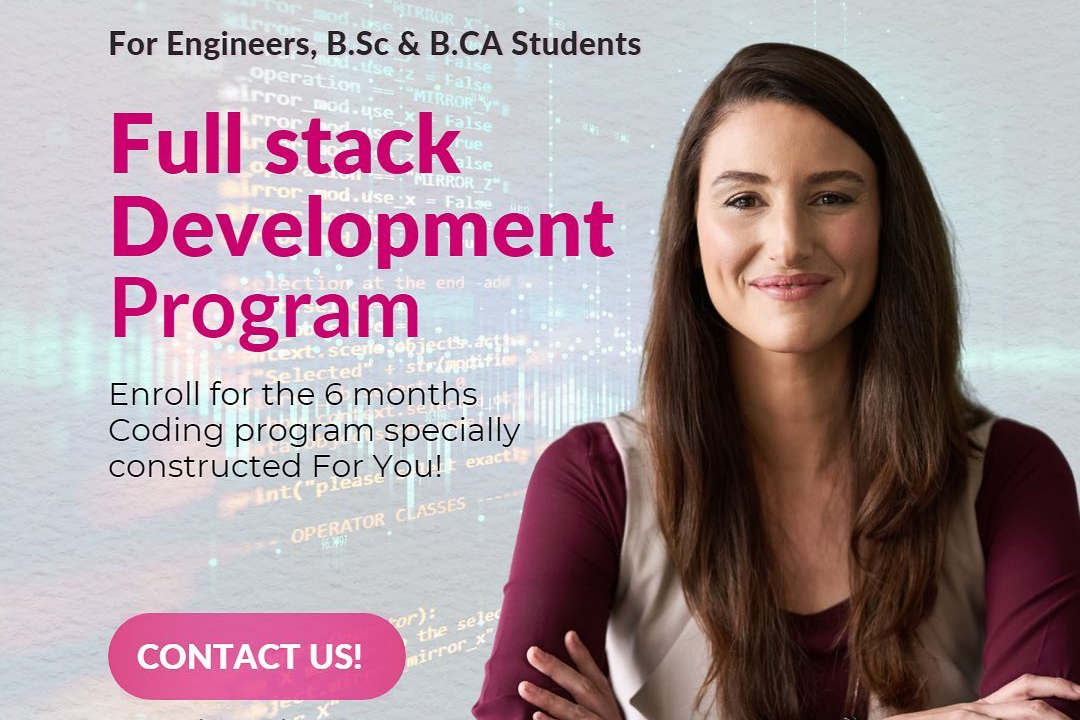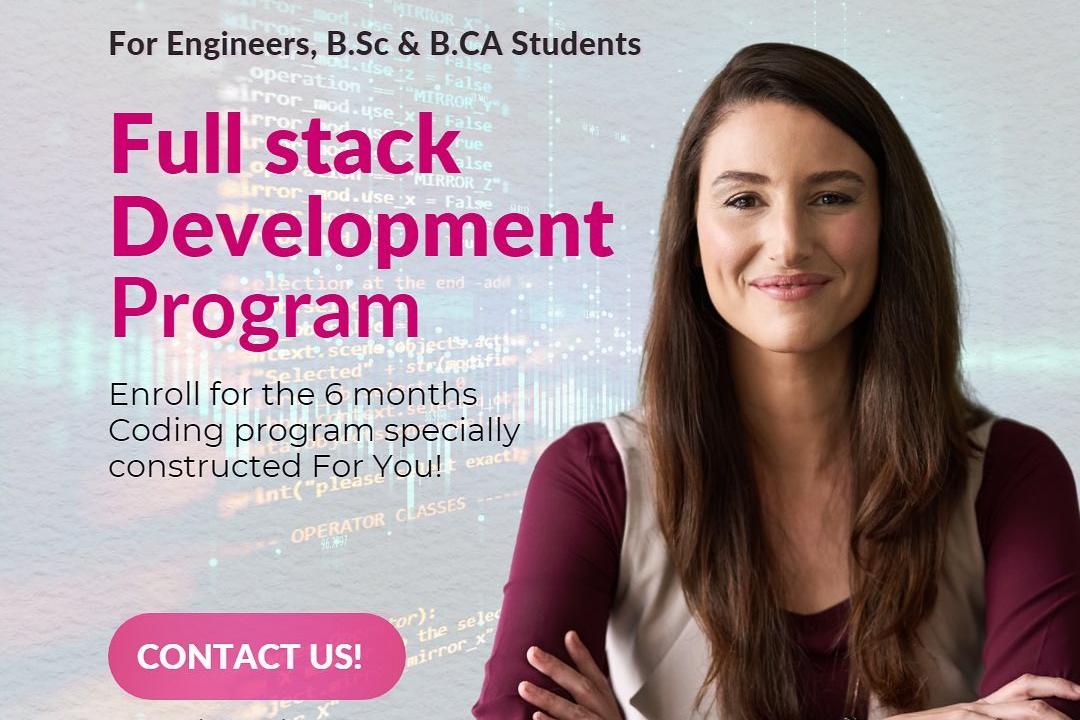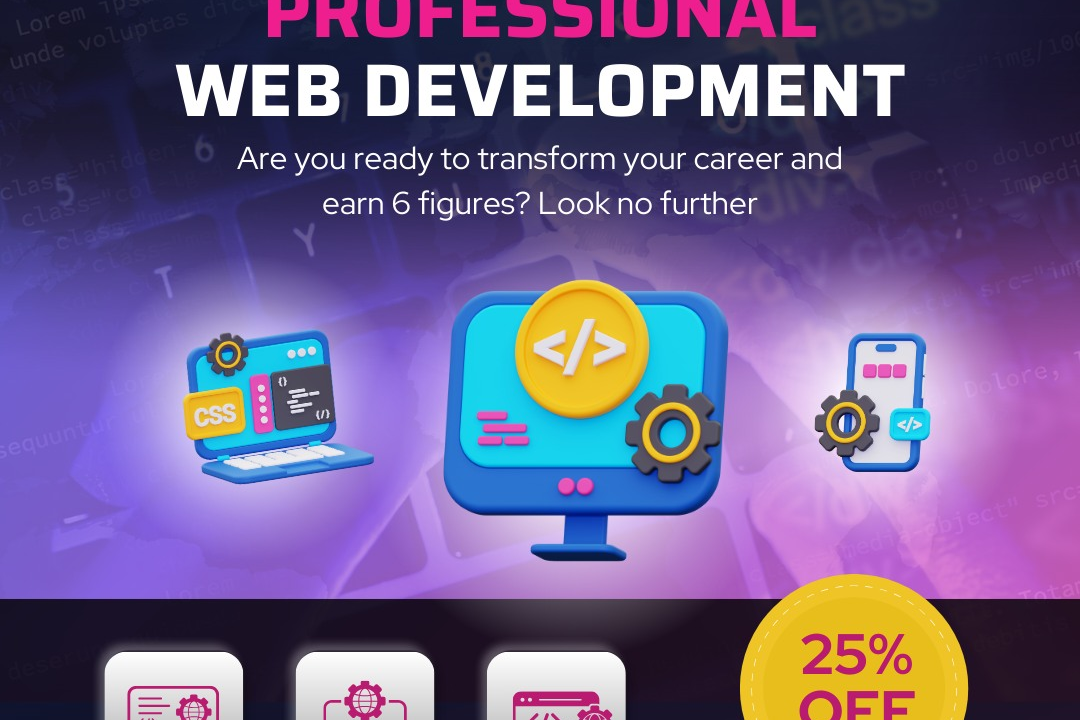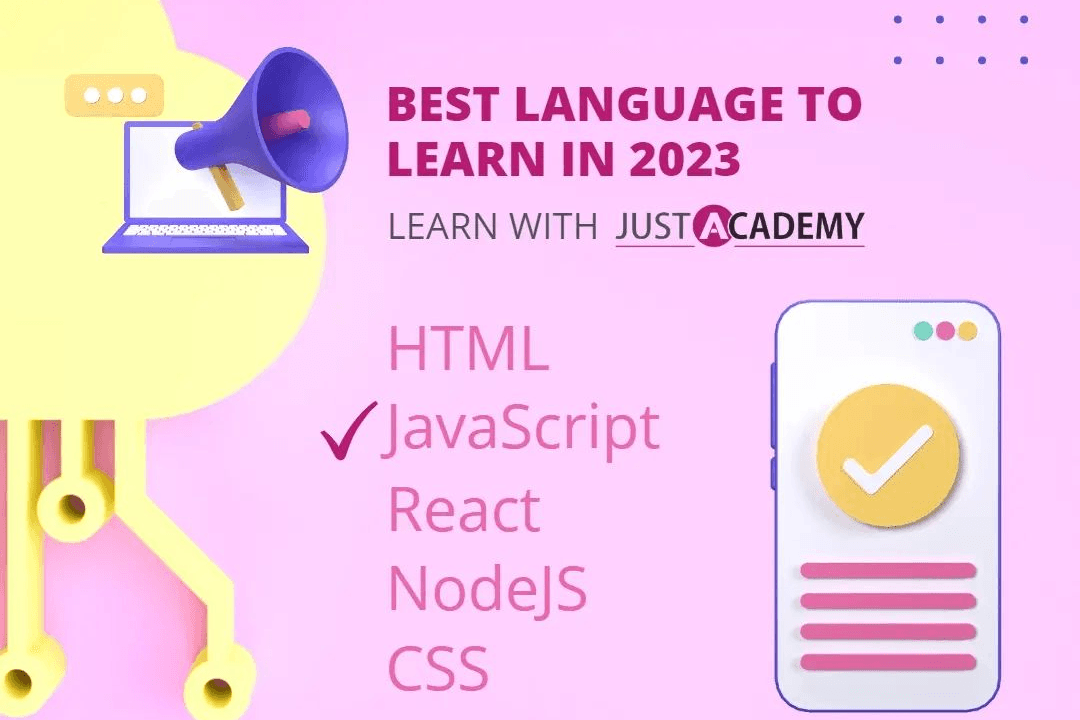Laravel Questions For Interview
Essential Laravel Interview Questions for Aspiring Developers
Laravel Questions For Interview
Laravel is a popular PHP framework that simplifies the development of web applications through its elegant syntax and powerful features. Understanding Laravel interview questions is crucial for developers aiming to showcase their expertise in building robust, scalable applications. Mastery of these questions not only demonstrates proficiency in the framework's core concepts such as routing, middleware, and Eloquent ORM but also highlights problem-solving abilities and knowledge of best practices. Familiarity with Laravel’s ecosystem, including its ability to integrate with other tools and platforms, can significantly enhance a candidate's appeal to potential employers, making them well-equipped to handle modern web development challenges.
To Download Our Brochure: https://www.justacademy.co/download-brochure-for-free
Message us for more information: +91 9987184296
1 - What is Laravel?
Laravel is a PHP framework designed for building web applications following the Model View Controller (MVC) architectural pattern. It provides a robust set of tools and features, including an expressive syntax, routing, and built in functions for database management.
2) What are the key features of Laravel?
Key features of Laravel include Eloquent ORM (an object relational mapping system), Blade templating engine, routing, middleware, built in authentication, and a powerful command line interface called Artisan.
3) What are migrations in Laravel?
Migrations are a version control system for your database. They allow developers to define and share the application's database schema, enabling easy modifications to the database structure over time.
4) Explain the difference between routes and controllers.
Routes define the endpoint that the application responds to, while controllers handle the application's logic for those routes. Routes route incoming requests to the appropriate controller methods.
5) What is Eloquent ORM?
Eloquent ORM is Laravel's built in Object Relational Mapping tool that allows developers to interact with the database using PHP syntax instead of SQL queries, making database operations more intuitive and readable.
6) What are the benefits of using middleware in Laravel?
Middleware acts as a filtering mechanism for incoming HTTP requests, allowing developers to perform actions before a request reaches the application, such as authentication, logging, or input sanitization.
7) How does Laravel's Blade templating engine work?
Blade is Laravel’s lightweight templating engine that allows developers to reuse layouts and sections efficiently. It provides simple syntax for template inheritance and includes logic directives, like @if, @foreach, that keep the views clean.
8) What is dependency injection in Laravel?
Dependency injection is a design pattern used in Laravel to enhance code reusability and maintainability by allowing developers to inject dependencies into classes rather than having them instantiated within the class itself.
9) Explain how Laravel handles form validation.
Laravel provides a simple and flexible validation mechanism through the Validator facade. Developers can validate incoming request data using rules specified within controller methods or as form request classes.
10) What is Artisan in Laravel?
Artisan is Laravel’s command line interface that provides numerous helpful commands for database migrations, seeding, and running custom commands, significantly speeding up the development process by automating repetitive tasks.
11 - How do you define relationships in Eloquent?
Relationships in Eloquent are defined using methods within models, such as `hasOne`, `hasMany`, `belongsTo`, and `belongsToMany`. These methods establish the relationship type between different database tables.
12) What are service providers in Laravel?
Service providers are the central place to configure and bootstrap application services, making them essential for registering bindings in the service container. They are called on application startup.
13) How can you handle exceptions in Laravel?
Laravel provides a built in exception handling system via the `App\Exceptions\Handler` class, allowing developers to customize responses for various exceptions and log errors effectively.
14) What are requests and responses in Laravel?
Requests represent incoming HTTP requests to the application, while responses are the data returned by the application. Laravel provides various methods and objects to handle both, ensuring clean request response cycles.
15) What is the purpose of the .env file in Laravel?
The .env file in a Laravel application holds environment specific configuration variables, such as database credentials and API keys, allowing for different configurations in local, staging, and production environments without code changes.
16) What is the purpose of Laravel's routing system?
Laravel's routing system allows developers to define the URLs their application responds to, linking them to specific controller actions or closure functions. This system is intuitive, enabling easy route definition with parameters and middleware for enhanced functionality.
17) What are Laravel's built in authentication features?
Laravel provides a comprehensive authentication system, including user registration, login, password resets, and role management. The built in functionality can be customized and extended, making it easy to implement robust security measures.
18) How does session management work in Laravel?
Laravel handles session management through various drivers, including file, cookie, database, Redis, and others. Session data can be easily accessed and manipulated using the `session` helper, enabling stateful authentication and user tracking.
19) What is the purpose of the `config` directory in Laravel?
The `config` directory contains configuration files for various aspects of the application, allowing developers to manage settings, such as database connections, mail services, and caching options, in a centralized manner.
20) How can Laravel handle caching?
Laravel offers a unified caching API, able to utilize different cache backends like Redis, Memcached, and file storage. Caching can significantly improve application performance by reducing database queries and allowing faster access to frequent data.
21 - What is Laravel Mix?
Laravel Mix is a tool for defining Webpack build steps for your application’s assets such as JavaScript and CSS. It simplifies the process of asset compilation, enabling features like versioning, minification, and Sass compilation with an easy to use API.
22) How can you implement API development in Laravel?
Laravel provides several tools for API development, including resource controllers, API routes, and JSON responses. The framework facilitates RESTful APIs through routing, controllers, and resource responses, making it simple to create and manage APIs.
23) What role does the Service Container play in Laravel?
The service container is a powerful dependency injection system that manages class dependencies and performs dependency resolution. It allows developers to bind classes to the container for later resolution, promoting better code organization.
24) What are form requests in Laravel?
Form requests are specialized request classes in Laravel that encapsulate validation logic for incoming form data. They centralize validation rules, making controllers cleaner and promoting reusability across different parts of the application.
25) How can you create custom Artisan commands in Laravel?
Custom Artisan commands can be created using the `make:command` Artisan command, generating a new command class. Developers can define the command's signature and logic, allowing for tailored console commands that perform specific tasks.
26) What is the purpose of Laravel's localization feature?
Laravel's localization feature allows developers to create applications that support multiple languages. By using language files, you can easily manage and switch between translations for user facing content throughout the application.
27) How does Laravel support event broadcasting?
Laravel provides event broadcasting features that allows you to share events between the client and server in real time using WebSockets. Through broadcasting, applications can emit events that are listened for by clients, facilitating real time updates.
28) What is the function of the `middlewares` in Laravel?
Middleware provides a convenient mechanism for filtering HTTP requests entering your application. It can be used for various tasks, including authentication, logging, setting headers, and cross origin resource sharing (CORS).
29) What is ‘seeder’ in Laravel?
Seeders in Laravel are classes that allow developers to populate the database with test data. They facilitate the creation of dummy records during development, ensuring that applications can be tested against realistic data sets.
30) What is Laravel Horizon?
Laravel Horizon is a beautiful dashboard for monitoring and configuring queues in Laravel applications. It provides real time monitoring of job processing, allowing developers to manage queues, retry failed jobs, and optimize performance.
31 - What are policies in Laravel?
Policies in Laravel are classes that organize authorization logic for a particular model or resource. They provide a way to manage user actions based on their permissions, enforcing security in your application effectively.
32) What are jobs in Laravel?
Jobs are queued tasks in Laravel that can be dispatched for asynchronous processing. This allows time consuming operations to be handled in the background, improving application responsiveness and user experience.
33) What is the purpose of the `app()` helper in Laravel?
The `app()` helper function provides access to the service container. It can be used to resolve classes and retrieve bindings, and is essential for dependency injection throughout the application.
34) How does Laravel facilitate unit testing?
Laravel includes built in support for unit testing with PHPUnit. Developers can create and run test cases, leveraging the framework’s testing helpers for database interactions, HTTP requests, and more, ensuring application robustness and reliability.
35) What are Laravel's validation rules?
Validation rules in Laravel are predefined checks that can be applied to input data to ensure it meets specified criteria. Examples include `required`, `email`, `unique`, and `max`, which can be easily customized and combined to create complex validation scenarios.
36) What is the role of routes/web.php and routes/api.php?
In Laravel, `routes/web.php` defines routes for web applications with sessions and cookies, while `routes/api.php` is designated for API routes, typically stateless and preferring JSON responses. This separation allows for better organization and management of routing logic.
37) How do you perform file uploads in Laravel?
File uploads in Laravel can be handled using the `request` object's `file` method. Developers can validate file types and sizes easily and move the uploaded files to designated storage folders using Laravel's built in file storage system.
38) What is the purpose of the `public` folder in Laravel?
The `public` folder contains the front controller (`index.php`) and other assets such as CSS, JavaScript, and images. It serves as the document root for the web server, ensuring that secure files remain outside the web accessible directory.
39) What are Laravel's cache busting features?
Laravel implements cache busting through the usage of versioning on assets compiled via Laravel Mix. By appending a hash to filenames, it ensures that users always receive the latest asset versions without relying on browser caching.
40) How can you customize error handling in Laravel?
Laravel enables developers to customize error handling in its `App\Exceptions\Handler` class, allowing for custom error pages, logging levels, and actions based on specific exception types, enhancing user experience and debugging processes.
Course Overview
The “Laravel Questions for Interview” course is designed to equip learners with essential knowledge and skills to excel in job interviews focusing on Laravel, one of the most popular PHP frameworks. The course covers a wide range of topics, including routing, middleware, authentication, API development, and testing. Through an engaging format, participants will explore common interview questions and best practices, gaining hands-on experience with real-time projects that illustrate core concepts. By the end of the course, learners will feel confident in their understanding of Laravel and be well-prepared to impress potential employers with their expertise.
Course Description
The “Laravel Questions for Interview” course at JustAcademy is an essential resource for anyone preparing for interviews focused on Laravel, the leading PHP framework. This comprehensive course covers a broad spectrum of topics, including routing, database migrations, Eloquent ORM, middleware, RESTful APIs, and security practices, equipping learners with the necessary skills to tackle common interview questions effectively. Participants will engage in real-time projects that reinforce their understanding of Laravel's capabilities while refining their problem-solving techniques. By the end of this course, students will not only enhance their knowledge and confidence but also stand out in the competitive job market by demonstrating their proficiency in Laravel development.
Key Features
1 - Comprehensive Tool Coverage: Provides hands-on training with a range of industry-standard testing tools, including Selenium, JIRA, LoadRunner, and TestRail.
2) Practical Exercises: Features real-world exercises and case studies to apply tools in various testing scenarios.
3) Interactive Learning: Includes interactive sessions with industry experts for personalized feedback and guidance.
4) Detailed Tutorials: Offers extensive tutorials and documentation on tool functionalities and best practices.
5) Advanced Techniques: Covers both fundamental and advanced techniques for using testing tools effectively.
6) Data Visualization: Integrates tools for visualizing test metrics and results, enhancing data interpretation and decision-making.
7) Tool Integration: Teaches how to integrate testing tools into the software development lifecycle for streamlined workflows.
8) Project-Based Learning: Focuses on project-based learning to build practical skills and create a portfolio of completed tasks.
9) Career Support: Provides resources and support for applying learned skills to real-world job scenarios, including resume building and interview preparation.
10) Up-to-Date Content: Ensures that course materials reflect the latest industry standards and tool updates.
Benefits of taking our course
Functional Tools
1 - Laravel Framework
Laravel is the core framework utilized in this training program. It provides a robust and elegant syntax that makes web application development straightforward. Students will learn to use Laravel’s features such as routing, sessions, and caching effectively. With insights into its MVC (Model View Controller) architecture, participants gain an understanding of how to structure their applications for scalability and maintainability. Hands on experience with Laravel facilitates a deeper comprehension of real world application development.
2) PHP
As Laravel is built upon PHP, students are trained in PHP programming language fundamentals. Understanding PHP is crucial as it serves as the backend foundation for Laravel applications. The course covers PHP basics such as variables, functions, and control flow along with advanced features like object oriented programming and error handling. This foundational knowledge ensures students can leverage Laravel effectively and troubleshoot any PHP related challenges during development.
3) Composer
Composer, a dependency management tool, is integral to Laravel application development. Participants will learn how to use Composer to manage libraries and packages necessary for their projects. This training includes installing, updating, and removing dependencies seamlessly, ensuring that participants can keep their project dependencies organized and up to date. Understanding Composer enhances a developer’s capability to utilize third party packages effectively, which is essential in modern web development.
4) MySQL
MySQL is the relational database management system used in conjunction with Laravel for data storage and retrieval. The course includes in depth instruction on database design principles and SQL queries. Students will gain hands on experience in creating database tables, relationships, and performing CRUD (Create, Read, Update, Delete) operations within a Laravel application. Familiarity with MySQL enhances a developer’s ability to handle data efficiently, ensuring strong backend operation.
5) Git Version Control
Version control is essential for collaborative development environments, and students will receive training on Git. Understanding Git allows students to track changes in their codebase, collaborate with other developers, and manage project versions effectively. The course covers basic commands such as commit, push, pull, and branching strategies. Proficiency in Git not only streamlines the development process but also fosters best practices in versioning and collaboration.
6) Postman
Postman is a widely used tool for API development and testing, and it is incorporated into the Laravel training program. Students will learn how to utilize Postman to send requests to their Laravel application’s endpoints, enabling them to test and debug their APIs efficiently. This hands on experience with Postman will teach students how to validate response structures, check status codes, and ensure proper functionality of their backend services. Mastery of API testing tools like Postman is crucial for modern web application development.
7) RESTful API Development
Understanding RESTful APIs is crucial in modern web applications. The course guides students through the principles of REST architecture and how to implement RESTful services in Laravel. Participants will learn how to create and manage APIs that can be utilized by front end frameworks and mobile applications. This knowledge equips developers with the skills to design scalable, secure, and flexible APIs essential for any web application.
8) Authentication & Authorization
Security is a paramount concern in web development. This training module focuses on Laravel's built in authentication features, including user registration, login, password resets, and role based access control. Students will learn how to implement authentication using Laravel's built in tools and configure middleware for protecting routes and APIs, ensuring that their applications are secure from unauthorized access.
9) Blade Templating Engine
Laravel's Blade templating engine provides a powerful way to design dynamic views. Participants will learn how to leverage Blade to create structured, maintainable, and reusable view templates. The course covers features such as template inheritance, control structures, and data rendering, enabling students to enhance the user interface of their applications effectively.
10) Laravel Mix
A modern asset compilation tool, Laravel Mix simplifies frontend build processes. Students will gain experience in using Laravel Mix for compiling CSS and JavaScript files, optimizing assets, and managing frontend dependencies. Mastery of this tool helps developers streamline their workflow and ensures that their applications load efficiently with minimized asset files.
11 - Testing in Laravel
This segment of the course emphasizes the importance of testing in the software development lifecycle. Students will learn how to write unit and feature tests using Laravel's testing framework, which promotes the practice of Test Driven Development (TDD). Understanding how to effectively test their codebase ensures that students can deliver high quality applications with fewer bugs and issues post deployment.
12) Deployment Strategies
Students will learn effective strategies for deploying Laravel applications to production environments. Topics include server requirements, environment configuration, managing environment variables, and using tools like Forge or Envoyer for smooth deployment processes. This knowledge enables participants to take their applications from development to live environments confidently and efficiently.
13) Real time Events with Laravel Echo
Laravel Echo is a powerful tool for building real time applications. Participants will learn how to implement real time features such as broadcasting events and notifications using Laravel Echo and WebSockets. This capability allows developers to create highly interactive applications that enhance user engagement and provide a dynamic user experience.
14) Database Migrations & Seeders
Database migrations and seeders are essential for managing database structure and ensuring that development environments are consistent. Students will learn how to create and apply migrations to define and modify database schemas and use seeders to populate databases with example data. This practice fosters a better understanding of database management and simplifies collaboration across development teams.
15) Task Scheduling with Laravel
This portion of the course focuses on Laravel's task scheduling feature, allowing developers to automate routine tasks within their applications. Students will learn how to define scheduled commands in Laravel and manage cron jobs effectively. Mastering task scheduling enables developers to optimize application maintenance and improve operational efficiency.
16) Error Handling & Debugging
Debugging is a crucial skill for developers, and this training module addresses how to handle errors and exceptions in Laravel. Participants will explore Laravel's built in error handling services, logging features, and how to create custom error pages. Understanding error handling techniques ensures developers can troubleshoot issues effectively and provide users with a smoother experience.
17) Caching Strategies
Caching is essential for enhancing application performance. Students will learn about different caching strategies that Laravel offers, including file, database, and Redis caching. This segment of the course emphasizes how to implement caching effectively to reduce load times and improve response times, leading to an overall better user experience.
18) Localization and Internationalization
As applications often serve a diverse user base, understanding localization and internationalization is vital. Students will learn how to prepare their Laravel applications for multiple languages and cultures, allowing them to create applications that can cater to users in different regions. This knowledge broadens the reach and accessibility of their applications.
These additional points create a comprehensive curriculum that ensures learners gain essential skills for developing modern, robust applications with Laravel, setting them up for success in their programming careers.
Browse our course links : https://www.justacademy.co/all-courses
To Join our FREE DEMO Session:
This information is sourced from JustAcademy
Contact Info:
Roshan Chaturvedi
Message us on Whatsapp:
Email id: info@justacademy.co












